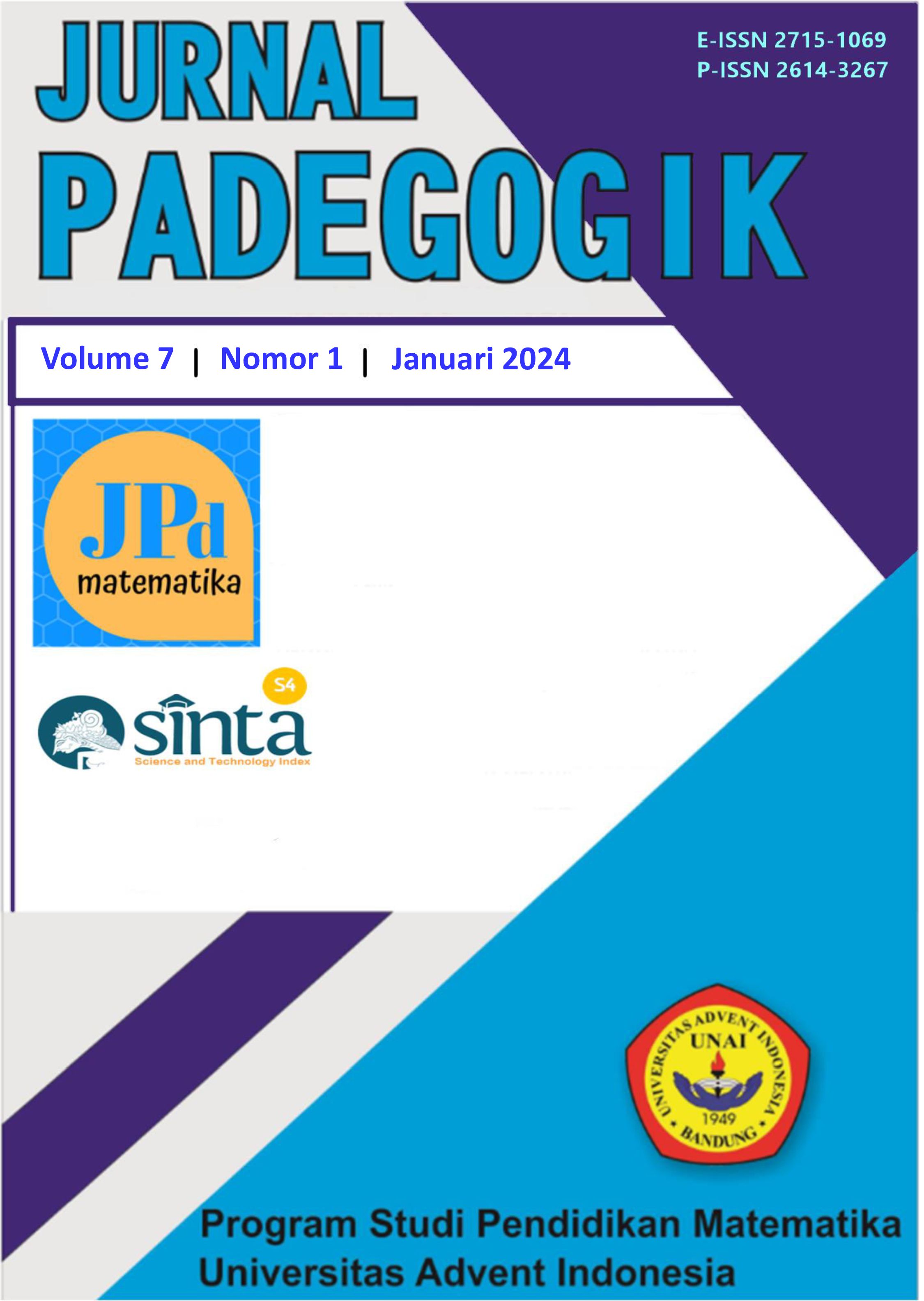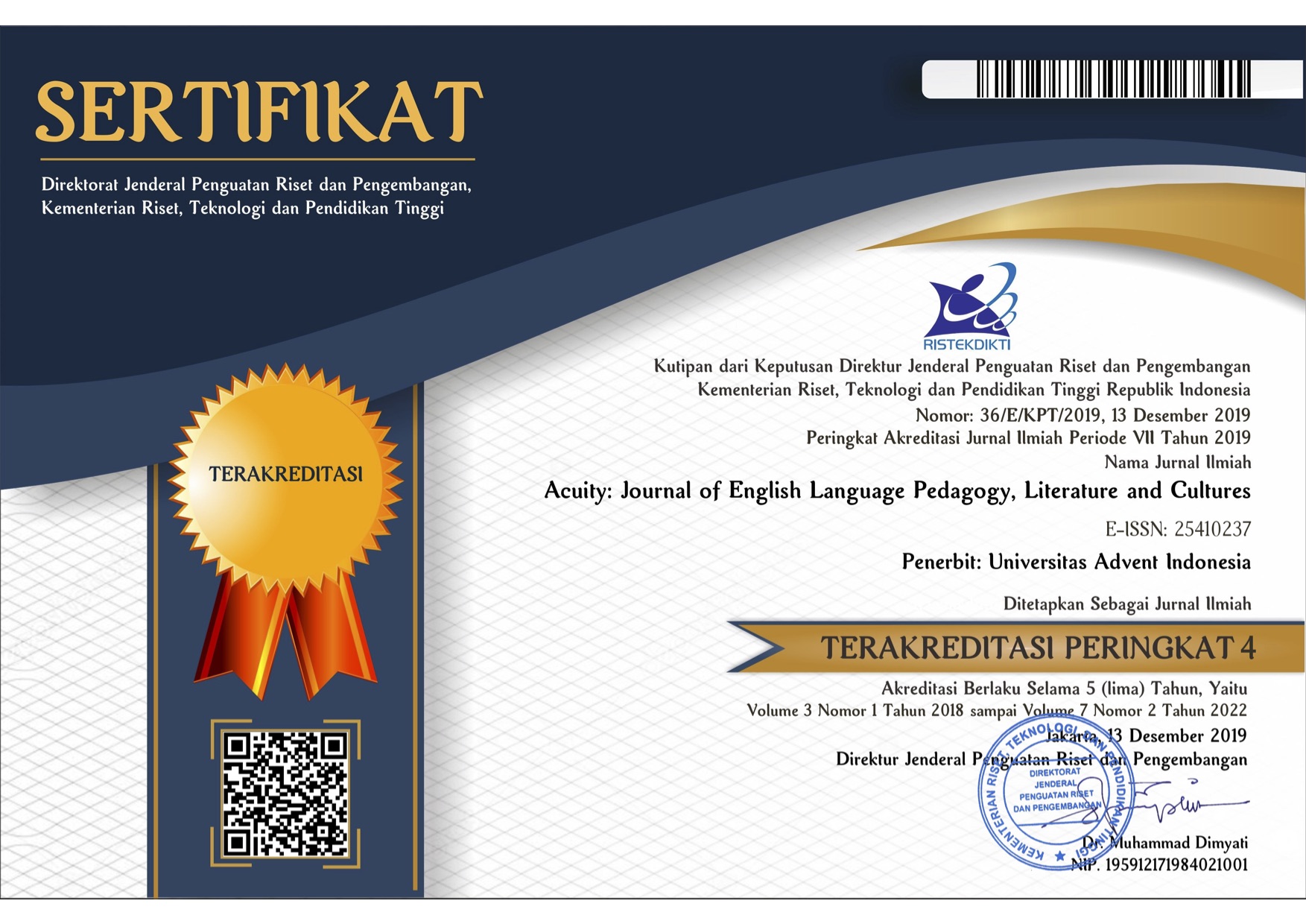Miskonsepsi Dan Kesulitan Peserta Didik Sekolah Menengah Pada Materi Pertidaksamaan Kuadrat
Kata Kunci:
Difficulties, Misconception, Quadratic InequalitiesAbstrak
Penelitian ini bertujuan mengungkapkan miskonsepsi dan kesulitan peserta didik sekolah menegah dalam menentukan himpunan penyelesaian suatu pertidaksamaan kuadrat. Penelitian ini merupakan penelitian kualitatif berbentuk studi kasus. Subjek penelitian ini adalah enam orang peserta didik di kelas X IPA 5 SMA Negeri 3 Pontianak. Pengumpulan data menggunakan tenik tes (paper and pencil) dengan alat berupa tes diagnostik berbentuk uraian dan teknik komunikasi langsung dengan alat berupa pedoman wawancara. Data yang telah didapatkan dari hasil tes dan wawancara kemudian di deskripsikan dengan mengkategorikannya sesuai dengan indikator yang telah disusun, kemudian di sajikan dalam bentuk tabel dan diberikan penyimpulan. Miskonsepsi yang ditemukan, yakni menggeneralisasikan persamaan menjadi pertidaksamaan dan Interprestasi keliru bahwa solusi pertidaksmaan tidak dapat berupa solusi tunggal. Sementara itu kesulitan yang ditemukan, yaitu (1) kesulitan memahami makna semantik dan simbolik dari pertidaksamaan (2) kesulitan menggunakan keterampilan aritmetika (3) kesulitan memahami tanda-tanda faktor hasil kali (4) kesulitan menerapkan aturan pertidaksamaan (5) keterbatasan pemahaman sistem bilangan (6) kurang memahami pertanyaan.
Unduhan
Referensi
Almog, N., & Ilany, B. S. (2012). Absolute value inequalities: High school students’ solutions and misconceptions. Educational Studies in Mathematics, 81(3). https://doi.org/10.1007/s10649-012-9404-z
Amani, R. A. D. S. S., & Mawarsari, V. D. (2019). Analisis Kesulitan Belajar Siswa X IPS SMA Negeri 15 Semarang Pada Materi Pertidaksamaan Nilai Mutlak. Seminar Nasional Edusaintek.
Anggraini, D., Yohanie, D. D., & Nurfahrudianto, A. (2022). Analisis Problematika Siswa dalam Menyelesaikan Soal Sistem Pertidaksamaan Linear Dua Variabel (SPtLDV) Berdasarkan Teori Pemahaman SKEMP. Prosiding Seminar Nasional Kesehatan, Sains Dan Pembelajaran, 2(1).
August, F. M., & Ramlah, R. (2021). ANALISIS KEMAMPUAN PEMECAHAN MASALAH MATEMATIS SISWA BERDASARKAN PROSEDUR POLYA. JIPMat, 6(1). https://doi.org/10.26877/jipmat.v6i1.8080
Blanco, L. J., & Garrote, M. (2007). Difficulties in learning inequalities in students of the first year of pre-university education in Spain. Eurasia Journal of Mathematics, Science and Technology Education, 3(3). https://doi.org/10.12973/ejmste/75401
Brown, E. M. (2002). How Students (Mis-)Understand Science and Mathmatics. Mathematics Teaching in the Middle School, 7.
Cuevas V, A., Rodríguez E, A., & González O., O. (2014). Un acercamiento funcional a la resolución de desigualdades matemáticas. El Cálculo y Su Enseñanza, 5. https://doi.org/10.61174/recacym.v5i1.122
Derya Kaltakci Gurel, Ali Eryilmaz, & Lillian C. McDermott. (2015). A Review and Comparison of Diagnostic Instruments to Identify Students’ Misconceptions in Science. Eurasia Journal of Mathematics, Science and Technology Education, 11(5).
Dewi, D., Ernawati, E., Nurhayati, L., Agina, S., Khodijah, S., & Hidayat, W. (2020). Analisis Kesulitan Siswa Dalam Pemecahan Masalah Matematik Siswa SMA Pada Materi Persamaan Dan Pertidaksamaan Linier. JPMI (Jurnal Pembelajaran Matematika Inovatif), 3(1).
Eshach, H. (2014). The use of intuitive rules in interpreting students’ difficulties in reading and creating kinematic graphs. Canadian Journal of Physics, 92(1). https://doi.org/10.1139/cjp-2013-0369
Gurel, D. K., Eryilmaz, A., & McDermott, L. C. (2015). A review and comparison of diagnostic instruments to identify students’ misconceptions in science. Eurasia Journal of Mathematics, Science and Technology Education, 11(5). https://doi.org/10.12973/eurasia.2015.1369a
Kemendikbud. (2014). Permendikbud Nomor 59 Tahun 2014 tentang Kurikulum 2013. In Kemendikbud.
Lestari, W. D. (2015). Kesulitan Siswa Kelas VII Dalam Menyelesaikan Soal Kemampuan Generalisasi Matematis Pada Materi Segitiga. Journal Universitas Wiralodra, 7(2).
Napfiah, S. (2016). BERPIKIR ALJABAR MAHASISWA DALAM MENYELESAIKAN MASALAH BERDASARKAN TAKSONOMI SOLO DITINJAU DARI KEMAMPUAN MATEMATIKA. Kalamatika: Jurnal Pendidikan Matematika, 1(2). https://doi.org/10.22236/kalamatika.vol1no2.2016pp171-182
Nasir, Muhammad. (2017). Analisis Kesulitan Belajar dan Miskonsepsi Mahasiswa dalam Praktikum Berbasis Proyek. Edu Sains: Jurnal Pendidikan Sains & Matematika, Vol.5 No.1. DOI: https://doi.org/10.23971/eds.v5i1.602
Navy, A. (2013). Manajemen Sumber Belajar dalam Meningkatkan Mutu Pembelajaran Sains. Jurnal Pendidikan Humaniora, 1(4).
NCTM. (2000). Executive Summary : Principles and Standards for School Mathematics Overview. The Arithmetic Teacher.
Ngedo, D. R., Prayitno, A.-, & Octavianti, C. T. (2020). Representasi Dalam Pembelajaran Matematika Siswa Kelas Vii Materi Himpunan Smpk Wignya Mandala Tumpang. Pi: Mathematics Education Journal, 3(1), 38–46. https://doi.org/10.21067/pmej.v3i1.3675
Nur, S., & Kartini, K. (2021). Analisis Kemampuan Pemahaman dan Pemecahan Masalah Matematis Siswa Kelas X Materi Persamaan Pertidaksamaan Nilai Mutlak. PYTHAGORAS: JURNAL PROGRAM STUDI PENDIDIKAN MATEMATIKA, 10(1). https://doi.org/10.33373/pythagoras.v10i1.2928
Nurhayati, & Bernard, M. (2019). Analisis Kesulitan Siswa Dalam Pemecahan Masalah Matematik Siswa Kelas X SMK Bina Insan Bangsa Pada Materi Persamaan Dan Pertidaksamaan. Journal On Education, 1(2).
Purba, D., & Lubis, R. (2021). Pemikiran George Polya Tentang Pemecahan Masalah. Jurnal MathEdu (Mathematic Education Journal), 4(1).
Sembiring, D. Y., Siregar, R. M. R., & Sitepu, D. R. (2021). Analisis Kesulitan Siswa Dalam Menyelesaikan Soal Cerita Sistem Persamaan Linear Dua Variabel (Spldv) Melalui Pembelajaran Online Di Masa Pandemi Kelas X Smk Negeri 2 Binjai. Jurnal Serunai Matematika, 13(1), 01–08. https://doi.org/10.37755/jsm.v13i1.351
Sudrajat, S. (2015). Pendidikan Multikultural Untuk Meningkatkan Kualitas Pembelajaran Ips Di Sekolah Dasar. JIPSINDO, 1(1). https://doi.org/10.21831/jipsindo.v1i1.2874
Supriyadi, E. W. A., Suharto, S., & Hobri. (2017). Analisis Kemampuan Koneksi Matematis Berdasarkan NCTM (National Council of Teachers of Mathematics) Siswa SMK Kelas XI Jurusan Multimedia pada Pokok Bahasan Hubungan Antar Garis. Kadikma, 8(1).
Tamba, K. P., & Siahaan, M. M. L. (2020). Pembuat Nol sebagai Hambatan Didaktis dalam Pertidaksamaan Kuadrat. JNPM (Jurnal Nasional Pendidikan Matematika), 4(2). https://doi.org/10.33603/jnpm.v4i2.3614
Tsamir, P., & Almog, N. (2001). Students’ strategies and difficulties: The case of algebraic inequalities. International Journal of Mathematical Education in Science and Technology, 32(4). https://doi.org/10.1080/00207390110038277
Tsamir, P., & Bazzini, L. (2004). Consistencies and inconsistencies in students’ solutions to algebraic ‘single-value’ inequalities. International Journal of Mathematical Education in Science and Technology, 35(6). https://doi.org/10.1080/00207390412331271357
Untu, Z., Purwanto, P., & Parta, I. N. (2020). Kesalahan guru dalam pembelajaran matematika materi bangun datar ditinjau dari Pengetahuan deklaratif. JPIn: Jurnal Pendidik Indonesia, 3(1). https://doi.org/10.47165/jpin.v3i1.82
Wahyuningsih, B. Y. (2022). Analisis Kesulitan Pemahaman Siswa pada Pembelajaran Matematika Materi Persamaan dan Pertidaksamaan Linear Satu Variabel. MASALIQ, 2(4). https://doi.org/10.58578/masaliq.v2i4.463
Yusmin, E. (2017). Kesulitan Belajar Siswa Pelajaran Matematika. Jurnal Visi Ilmu Pendidikan, 9(1).

##submission.downloads##
Diterbitkan
Cara Mengutip
Terbitan
Bagian
Lisensi
Hak Cipta (c) 2024 Jurnal Padegogik

Artikel ini berlisensiCreative Commons Attribution-NonCommercial-ShareAlike 4.0 International License.
Penulis yang mempublikasikan naskahnya di jurnal ini menyetujui hal-hal berikut:
- Hak cipta tetap pada penulis, penulis memberikan kepada jurnal hak penerbitan pertama dan sekaligus melisensi karyanya mengikuti Creative Commons Attribution License yang mengizinkan orang lain untuk berbagi karya dengan penghargaan terhadap hak kepenulisan dan penerbitan pertama di jurnal ini.
- Penulis bisa mengikuti kontrak tambahan lain untuk distribusi non-ekslusif bagi karyanya tersebut (contoh: mempostingnya ke repositori institusi atau menerbitkannya dalam sebuah buku), dengan penghargaan terhadap penerbitan pertama di jurnal ini.
- Penulis diizinkan dan didorong untuk mem-posting karya mereka online (contoh: di repositori institusi atau di website mereka) sebelum dan selama proses penyerahan, karena dapat mengarahkan ke pertukaran produktif, seperti halnya sitiran yang lebih awal dan lebih banyak dari karya yang diterbitkan. (Lihat The Effect of Open Access).







